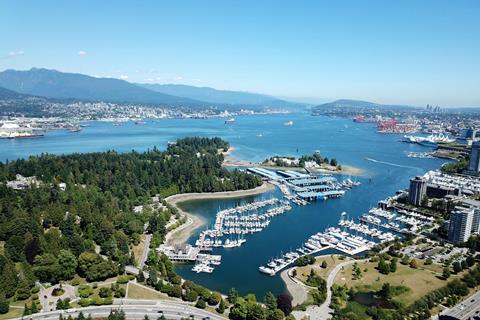A pilot project in Port Moody in British Columbia will see the first turquoise hydrogen development in North America. The project will use an innovative methane pyrolysis technology. for the first time in North Americaat Suncor’s Burrard Terminal site.
Using an innovative methane pyrolysis technology for the first time in North America, the project, located at Suncor’s Burrard Terminal site, will produce hydrogen while storing the carbon byproduct as solid synthetic graphite that can be sold on the open market for manufacturing or industrial use.The project includes FortisBC Energy Inc, Suncor Energy (Suncor) and Hazer Group Limited (Hazer) among the partners.
“While we are in the early stages of an exciting energy transformation with this hydrogen project, innovative partnerships like this will help accelerate that change. Renewable and low carbon gases, like hydrogen, are instrumental in reducing greenhouse gas emissions effectively and affordably while ensuring we have a resilient and diversified energy system for British Columbians,” said Roger Dall’Antonia, president and CEO of FortisBC.
Turquiose hydrogen
Hydrogen generated from natural gas with the carbon byproduct being captured as solid carbon is referred to as “turquoise” hydrogen and has far lower and more easily managed lifecycle greenhouse gas emissions associated with it.
If the pilot continues as a full commercial build out, the project would be expected to produce up to 2,500 tonnes of hydrogen per year. This equates to roughly 300,000 gigajoules of clean-burning gas energy that can replace the equivalent annual natural gas usage of approximately 3,300 B.C. households.
The project is being funded directly from the partner companies and by the provincial government’s CleanBC Industry Fund.
FortisBC said that the addition of hydrogen to its renewable and low carbon gas supply is critical to the company’s ongoing efforts to decarbonise. Ongoing research is being conducted, both through this project and in conjunction with the University of British Columbia-Okanagan, on how to blend hydrogen into the existing gas infrastructure.
A recent study commissioned by the provincial government, FortisBC and the BC Bioenergy Network found that the potential for hydrogen production in the province could exceed 200 petajoules by 2050 – roughly enough gas to completely replace current natural gas volumes.
The first phase of the project is now underway including front-end engineering, design studies and permitting applications. By the end of 2023, a prototype version of the Hazer hydrogen reactor is expected to be constructed onsite at the Burrard location for testing.






